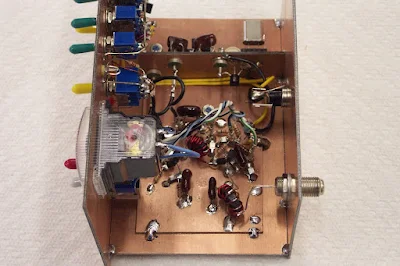
Hey, the signals are electromagnetic. They are very QRP. And the receivers (well, at least the "amplifiers") are often homebrew. It's 400 years since Galileo spotted Jupiter's moons. To commemorate this, we have IYA2009. The organizers are developing a program to allow people to build their own simple telescopes, and are encouraging those who already have 'scopes to get out and let their neighbors take a look at the wonders of the universe. We did a bit of this "sidewalk astronomy" in London. We'll do our part for IYA2009 by taking our 6 inch Dobsonian out into the piazza here in Trastevere. Check out the project web site:
http://www.astronomy2009.org/globalprojects/cornerstones/galileoscope/




.JPG)
